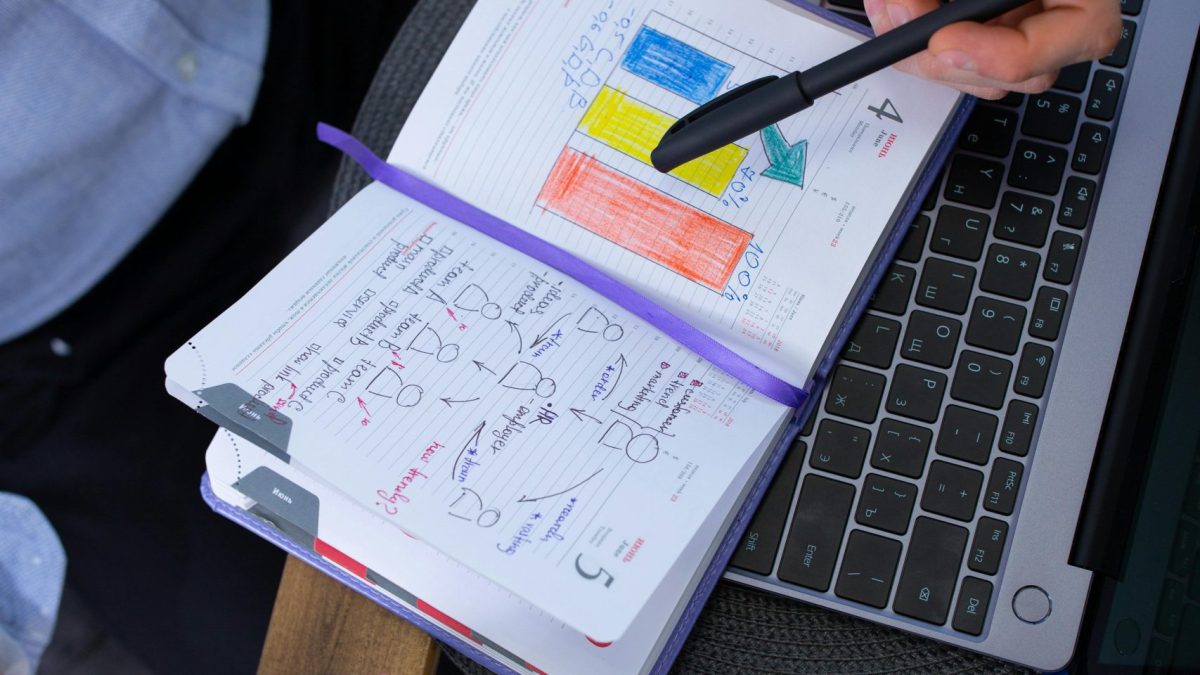Unlocking the Potential of Personal Finance Education in Australia

Current State in Australian Schools
Australia’s journey towards integrating personal finance education into school curriculums is on a promising path, yet remains in its infancy. While some schools have begun to weave financial literacy into their programs, a comprehensive, nationwide approach is still in development. This scenario presents a unique opportunity for growth and enhancement in our educational frameworks.
The Imperative for Financial Literacy
In an era marked by rapid economic shifts and increasing financial complexity, the need for robust personal finance education has never been more critical. Young Australians are facing a future where financial decisions can have long-lasting impacts. Empowering them with the knowledge and skills to navigate these challenges is not just beneficial; it’s essential.
A Global Perspective
When we cast our gaze internationally, it’s evident that some countries are leading the charge in financial education, embedding it deeply within their school curriculums. Nations like Singapore and Finland are setting benchmarks, demonstrating that early financial education correlates with higher financial literacy and well-being in adulthood. This global overview not only inspires but also offers valuable lessons on the potential paths forward for Australia.
By embracing the lessons from abroad and recognizing the urgent need for financial literacy in our changing world, Australia can pave the way for a future where all citizens are equipped to make informed financial decisions. The time to act is now, to ensure our young people grow into financially savvy adults, ready to navigate the complexities of the modern economy.
Unlocking the Potential of Personal Finance Education in Australia
Current State in Australian Schools
Australia’s journey towards integrating personal finance education into school curriculums is on a promising path, yet remains in its infancy. While some schools have begun to weave financial literacy into their programs, a comprehensive, nationwide approach is still in development. This scenario presents a unique opportunity for growth and enhancement in our educational frameworks.
The Imperative for Financial Literacy
In an era marked by rapid economic shifts and increasing financial complexity, the need for robust personal finance education has never been more critical. Young Australians are facing a future where financial decisions can have long-lasting impacts. Empowering them with the knowledge and skills to navigate these challenges is not just beneficial; it’s essential.
A Global Perspective
When we cast our gaze internationally, it’s evident that some countries are leading the charge in financial education, embedding it deeply within their school curriculums. Nations like Singapore and Finland are setting benchmarks, demonstrating that early financial education correlates with higher financial literacy and well-being in adulthood. This global overview not only inspires but also offers valuable lessons on the potential paths forward for Australia.
By embracing the lessons from abroad and recognizing the urgent need for financial literacy in our changing world, Australia can pave the way for a future where all citizens are equipped to make informed financial decisions. The time to act is now, to ensure our young people grow into financially savvy adults, ready to navigate the complexities of the modern economy.
Foundations of Personal Finance
- Budgeting and Expense Management: The cornerstone of personal finance, budgeting, allows individuals to track and control their spending, ensuring that they live within their means. Mastering this skill fosters a sense of financial discipline, crucial for long-term stability.
- Savings Strategies and Emergency Funds: A robust savings plan, complemented by an emergency fund, provides a safety net against unforeseen financial shocks. This dual approach ensures resilience, offering peace of mind in times of economic uncertainty.
- Credit, Loans, and Debt Management: Understanding the intricacies of credit, the implications of loans, and the strategies for effective debt management can safeguard individuals from the pitfalls of overborrowing. It empowers them to make prudent financial decisions, enhancing their creditworthiness and financial health.
Integrating these fundamental concepts into the curriculum not only equips students with practical skills but also instills a proactive mindset towards managing their finances. As we forge ahead, the inclusion of personal finance education in schools will undoubtedly serve as a cornerstone for building a financially literate, empowered generation.
The Impact of Personal Finance Education on Future Financial Stability

Early financial education is akin to planting a seed that grows into a sturdy tree of financial stability. By introducing young minds to the principles of budgeting, saving, and investing, we lay the groundwork for informed financial decisions in adulthood. This education serves as a beacon, guiding individuals away from the treacherous shores of debt and towards the safe haven of savings and financial security. The transformative power of personal finance education is not just theoretical; it is vividly illustrated in the success stories of those who have navigated their way to financial well-being, thanks to their early financial literacy.
- Reducing Personal Debt: Armed with knowledge, individuals can avoid the pitfalls of excessive borrowing, understanding the true cost of debt and the importance of living within their means.
- Increasing Savings: Education in personal finance illuminates the path to building a robust savings plan, emphasizing the significance of emergency funds and the power of compound interest.
- Success Stories: Case studies abound of individuals who, with the tools and insights gained from financial education, have turned their financial situations around, achieving goals that once seemed out of reach.
The narrative of personal finance education is one of empowerment and transformation. By embedding these lessons into the fabric of our educational system, we can ensure that future generations are not only prepared to face the financial challenges of their times but are also poised to seize the opportunities that financial literacy affords. The journey towards financial stability and well-being starts with education, and the time to embark on this journey is now.
The Australian Economic Context and Personal Finance

Understanding the Australian economic landscape is pivotal for personal financial planning. The unique aspects of our economy, such as superannuation, the housing market, and the importance of mortgages and property investment, play a significant role in shaping our financial futures. Superannuation, a compulsory system of pension contribution, stands as a cornerstone of financial security for Australians, underscoring the importance of early and informed engagement with retirement planning. Meanwhile, the housing market, often seen as a barometer of economic health, demands a nuanced understanding of mortgages and property investment. These elements, integral to the Australian economic context, highlight the critical need for comprehensive personal finance education.
- Superannuation: A mandatory scheme designed to secure your financial future post-retirement. Its significance cannot be overstated, as it ensures a steady income in your golden years.
- The Housing Market: A vital component of personal finance, understanding the intricacies of mortgages and property investment can lead to informed decisions, potentially yielding significant returns.
By embedding personal finance education into the curriculum, we equip our youth with the knowledge to navigate these aspects confidently. This education is not just about managing money; it’s about securing a prosperous future in the unique economic landscape of Australia.
Charting the Course for Personal Finance Education in Australian Schools

Integrating personal finance education into the Australian school curriculum faces several challenges, yet holds immense potential for reshaping the financial future of young Australians. The current educational landscape is marked by a lack of uniformity in financial literacy programs, with schools independently determining the extent and depth of such education. This fragmentation underscores the need for a cohesive, nationwide strategy that ensures all students receive a foundational understanding of personal finance.
Envisioning Effective Delivery Models
- Standalone Subjects: Introducing dedicated classes on personal finance could provide a focused and comprehensive exploration of financial concepts, from budgeting to investing.
- Integrated Curriculum: Weaving financial literacy into existing subjects such as Mathematics, Economics, and Social Studies could offer contextual learning opportunities, making the principles more relatable and impactful.
- Extracurricular Programs: After-school clubs and workshops can supplement formal education, providing practical experiences in budgeting, saving, and investing.
The role of technology and online resources in this educational revolution cannot be overstated. Digital platforms offer interactive and engaging ways to learn about personal finance, catering to the diverse learning styles of students. From online simulations of stock market investing to budgeting apps, technology provides tools that can bring financial concepts to life, making learning both fun and effective. By harnessing these resources, schools can significantly enhance the financial literacy of their students, preparing them for a future where they are in control of their financial destinies.
Implementing Personal Finance Education in Schools

The integration of personal finance into the Australian school curriculum faces several challenges, yet holds immense potential for shaping financially savvy future generations. The current educational landscape is marked by a lack of uniformity in financial literacy programs, with schools at varying levels of implementation due to differing resources and priorities. This inconsistency underscores the need for a standardized, nationwide approach to personal finance education.
- Current Challenges: The primary hurdle is the absence of a cohesive framework that aligns with the national curriculum, making it difficult for schools to uniformly adopt and integrate financial literacy into their teaching.
- Potential Models: Solutions include introducing standalone subjects dedicated to personal finance, integrating financial concepts into existing subjects like maths or economics, and offering extracurricular programs that provide practical financial learning experiences.
- Role of Technology: Digital platforms and online resources emerge as powerful tools in enhancing financial literacy, offering interactive and engaging ways for students to learn about personal finance. These technologies can complement traditional teaching methods, providing a blended learning experience that caters to diverse learning preferences.
Embracing innovative approaches and leveraging technology will be key in overcoming the challenges of integrating personal finance education into schools. By doing so, we can equip our youth with the knowledge and skills necessary to navigate the complexities of the financial world, ensuring their future financial stability and success.
Implementing Personal Finance Education in Schools
The integration of personal finance into the Australian school curriculum faces several challenges, yet holds immense potential for shaping financially savvy future generations. The current educational landscape is marked by a lack of uniformity in financial literacy programs, with schools at varying levels of implementation due to differing resources and priorities. This inconsistency underscores the need for a standardized, nationwide approach to personal finance education.
- Current Challenges: The primary hurdle is the absence of a cohesive framework that aligns with the national curriculum, making it difficult for schools to uniformly adopt and integrate financial literacy into their teaching.
- Potential Models: Solutions include introducing standalone subjects dedicated to personal finance, integrating financial concepts into existing subjects like maths or economics, and offering extracurricular programs that provide practical financial learning experiences.
- Role of Technology: Digital platforms and online resources emerge as powerful tools in enhancing financial literacy, offering interactive and engaging ways for students to learn about personal finance. These technologies can complement traditional teaching methods, providing a blended learning experience that caters to diverse learning preferences.
Embracing innovative approaches and leveraging technology will be key in overcoming the challenges of integrating personal finance education into schools. By doing so, we can equip our youth with the knowledge and skills necessary to navigate the complexities of the financial world, ensuring their future financial stability and success.
Looking Towards the Future: The Evolving Landscape of Personal Finance

The landscape of personal finance is undergoing a seismic shift, driven by the rapid advancement of financial technologies (fintech). These innovations are revolutionizing the way we manage our finances, offering tools for budgeting, investing, and saving directly from our smartphones. The impact of fintech on personal finance management is profound, making it easier for individuals to make informed financial decisions.
However, the benefits of these technologies can only be fully realized when individuals are informed about global economic changes and their potential impact on personal finance. The global economy is interconnected, with events in one part of the world affecting financial markets and economies elsewhere. Staying informed about these changes is crucial for effective personal financial planning and risk management.
Preparing students for the financial challenges and opportunities of the future is an imperative task. It involves not only teaching them about budgeting and saving but also about the emerging technologies that will shape the future of finance. By incorporating lessons on fintech and global economic literacy into the curriculum, we can empower students to navigate the complexities of the modern financial world.
Education in personal finance is more than just learning to manage money. It’s about understanding the broader economic forces at play and leveraging technology to make smarter financial decisions. As we look towards the future, the role of personal finance education in schools becomes increasingly critical. It lays the foundation for a financially literate society capable of facing the challenges and seizing the opportunities of the evolving financial landscape.
In Closing
Empowering Australians through financial education is essential. It lays the groundwork for financial security and wealth building in an unpredictable economy. By integrating comprehensive personal finance education into the curriculum, we can equip individuals with the tools for effective budgeting, saving, and investing, fostering a proactive approach to financial independence. This journey towards financial literacy not only prepares Australians for the challenges ahead but also opens up opportunities for a more stable and prosperous future. Let’s commit to fostering a financially savvy society, ready to navigate the complexities of the modern financial landscape with confidence and skill.

Ayesha Brueckner is your typical 24 year. Carrying a mountain of student debt. Looking at house prices and wondering if buying one will ever be possible. Looking for income solutions outside of a weekly wage. Join her on her investment and wealth research journey.

